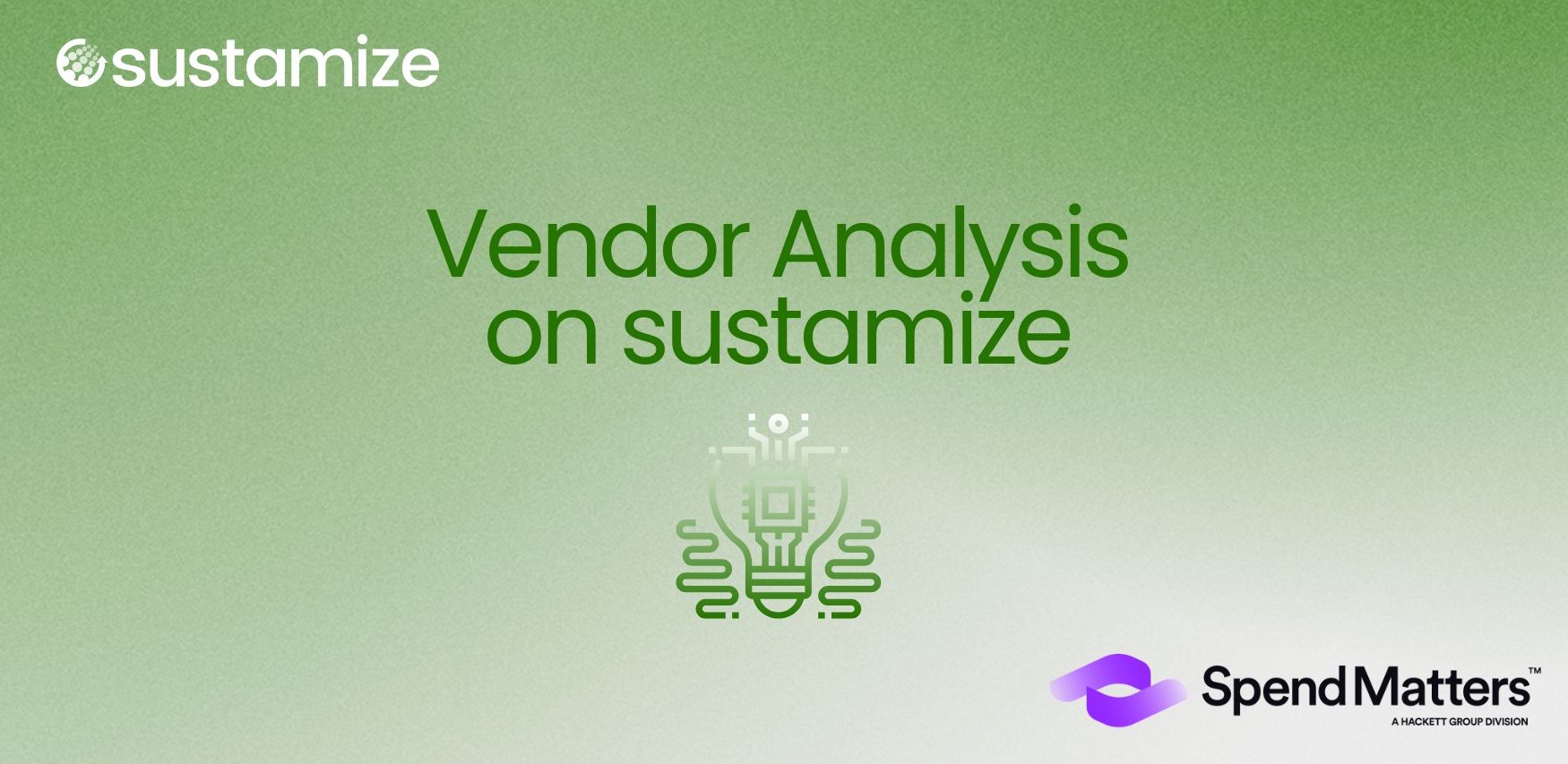A Meaningful Approach to CO2 Reporting for Manufacturing Companies
Companies need to establish a CO2 measurement strategy today to prepare for 2023.

With the proposed amendment to the CSR Directive (Corporate Sustainability Reporting Directive), several thousand companies in Germany will be obliged to include a sustainability report in their management report in the future.
The planned changes already affect the 2023 reporting period, so it is important to establish a sustainable CO2 measurement and reduction strategy in the company today. However, many manufacturing companies are faced with the challenge of carrying out holistic CO2 reporting for the first time and with the question of how best to implement it in the long term.
Climate accounting of companies and products
In order to properly begin CO2 reporting, it is important to know the difference between a Corporate Carbon Footprint (CCF) and a Product Carbon Footprint (PCF). Here, the CCF refers to the climate accounting of the entire company. This means that all CO2e emissions are considered that are directly and indirectly caused by the company's activities. Besides this, there is also the option of calculating a PCF. In this case, all CO2e emissions that arise on the basis of the entire life cycle of a product are summarized.
How is reporting done in accordance with regulations?
Carbon footprints are carried out on the basis of certain standards. Each company can decide which standard to use for reporting. The standards help to define system boundaries and to give indications as to which contents are relevant for carbon footprint accounting. In Germany in particular, the ISO standards or the GHG Protocol are frequently used to calculate the CCF. However, the GHG Protocol is currently more popular internationally due to its clear distinction between scopes.
Addressing CO2 reporting within the framework of the GHG Protocol
The advantage of reporting according to the GHG Protocol is the division of the CCF into three different and complex scopes.
Scope 1 (direct emissions)
Scope 1 analysis includes all possible direct emissions from own or controlled sources. This typically includes internal combustion engines, such as generators, vehicles, furnaces, as well as chemical substances, such as losses to coolants, or natural processes, such as fertilizers and animals. The analysis is performed based on consumption volumes. In doing so, the analysis is converted to CO2 equivalents based on company values collected through measurement data, consumption values, recognized averages, financial data, or scientific sources.
Scope 2 (indirect emissions)
Scope 2 emissions are indirect emissions stemming from purchased energy generation. This includes the uptake of all purchased energy (typically electricity, heat, steam or pressure). Analysis of consumption levels is performed using consumption, metering, or financial data. The analysis of emission levels is performed using the supplier's energy types or composition of energy types, recognized standard data or other, scientific sources. Basically, every company can access the CO2e data of the electricity mix on the country, but there are of course regional differences. Here, municipal utilities often have their own CO2e emission values.
Scope 3 (indirect emissions)
Scope 3 emissions are all indirect emissions (not included in Scope 2) that occur in the value chain of the reporting company, including upstream and downstream emissions. In addition to emissions caused by employee travel and waste management, the upstream supply chain plays a major role, as do emissions from product use, transport and logistics.
Scope 3 emissions are the largest source of emissions for a company in most sectors and often account for several times more than Scope 1 and 2 emissions. According to the 2018 Global Supply Chain Report, approximately 40% of global GHG emissions from companies are caused or impacted by their purchases (i.e., goods and services purchased) and the products they sell (i.e., the use of the products sold).
For many companies, the majority of greenhouse gas emissions and cost reduction opportunities lie outside of their own operations. For this reason, Scope 3 emissions measurement brings numerous benefits, such as: Assessing emissions hotspots in the supply chain, identifying suppliers that are leaders or laggards in sustainability performance, identifying opportunities for material efficiency and cost reduction in the supply chain.

Product life cycle emissions
Product life cycle emissions are all emissions associated with the manufacture and use of a given product, from cradle to grave, including emissions from raw materials, manufacturing, transportation, storage, sales, use and disposal. In this context, the PCF is a cross-section of all scopes related to a given product. However, Scope 3 and PCF in particular overlap. So the obvious question is - what is the difference between the two?
What is the difference between measuring Scope 3 emissions and measuring a PCF?
Both standards take a value chain or life cycle approach to GHG accounting. The Scope 3 Corporate Vale Chain Standard allows a company to identify the greatest opportunities to reduce GHG emissions throughout the company's value chain. The Product Standard, on the other hand, allows a company to identify individual products with the greatest reduction potential.
The Corporate Value Chain (Scope 3) Standard helps pinpoint options for reducing GHG emissions, track performance, and engage suppliers at the corporate level from a top-down perspective, while the PCF Standard helps a company achieve the same goals at the product level from a bottom-up perspective. (More on the bottom-up calculation can be found here).
While each standard can be implemented independently, together the two standards provide a comprehensive approach to measuring and managing greenhouse gas emissions in the value chain. sustamize provides solutions at this very interface. With the API integration to the sustamize Product Footprint Engine you can get accurate CO2 data and efficiently perform your Scope 3 and PCF analyses.
Sources
CDP (2017). Global Supply Chain Report 2017/ 2018. https://www.cdp.net/en/research/global-reports/global-supply-chain-report-2018
PricewaterhouseCoopers GmbH (2021, 21. April). CSR-Richtlinie: Heute beginnt eine neue Ära in der Nachhaltigkeitsberichterstattung. Pressemitteilung. https://www.pwc.de/de/pressemitteilungen/2021/csr-richtlinie-heute-beginnt-eine-neue-aera-in-der-nachhaltigkeitsberichterstattung.html
World Resources Institute and World Business Council for Sustainable Development (2011). Greenhouse Gas Protocol. ISBN 978-1-56973-772-9. https://ghgprotocol.org/sites/default/files/standards/Corporate-Value-Chain-Accounting-Reporing-Standard_041613_2.pdf



.jpg)
